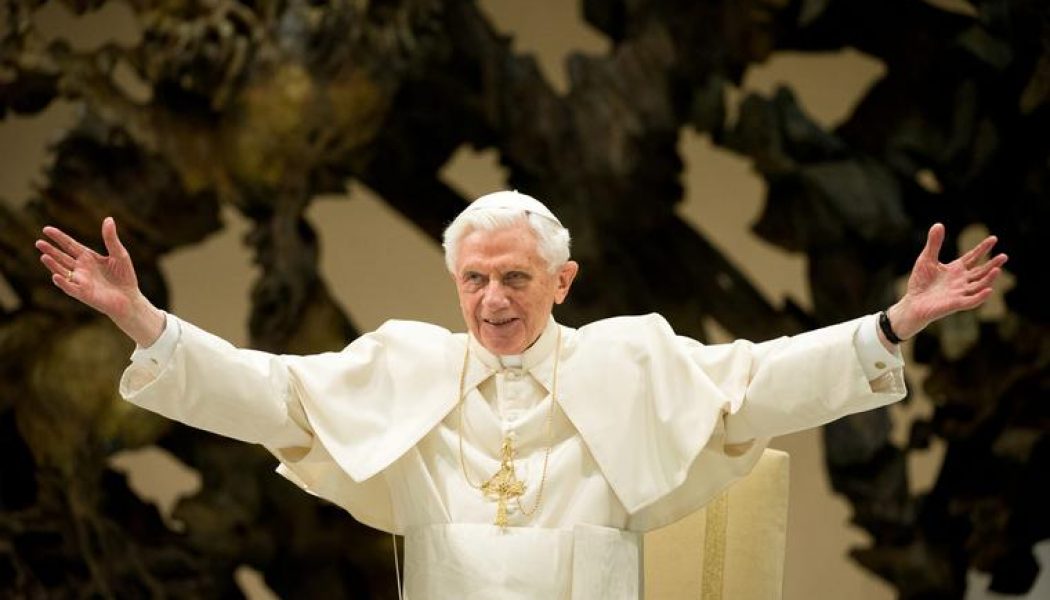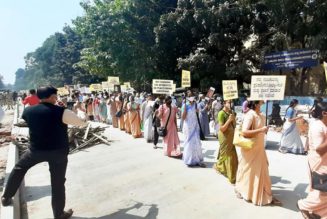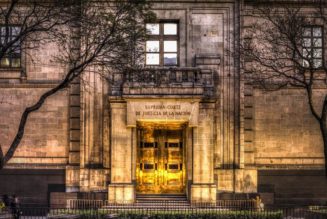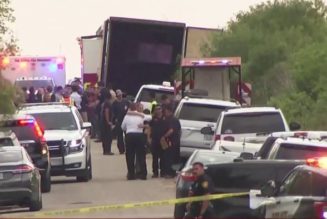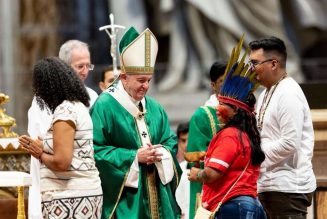
Did the Church place too many of her theological eggs in one Bavarian Easter basket?
The question occurs as Pope Emeritus Benedict XVI — born on Holy Saturday and baptized the same day in the newly-blessed Easter water — celebrates his 94th birthday tomorrow, April 16.
With the death of Father Hans Küng, 93, during the Easter Octave, the generation to which Joseph Ratzinger belongs is passing away. Ratzinger, the Bavarian, and the Swiss Küng were 30-something theological wunderkinds, both part of what Ratzinger called the “Rhine alliance” of northern European theologians who would definitively shape the work of the Second Vatican Council.
The Rhine Flows Into the Tiber was the title of one of the more famous books on Vatican II, and Cardinal Ratzinger flowed farther than anyone, becoming, as it were, the Tiber itself upon his election as supreme pontiff in 2005.
The current theological chaos in Germany, where the “binding synodal path” raises the possibility of schism, invites renewed attention to German theology, one of the most influential forces in ecclesial life in the past century. For 60 years, from his ordination in 1951 to his abdication in 2013, Joseph Ratzinger was at the center of it. Indeed, he became something of an anchor in stormy seas. After his abdication, the boat began to drift.
In the late evening of his life, Ratzinger/Benedict can be understood as the Church’s singular, multi-generational response to the reforming agenda of German theology. Would that reform be Catholic, returning to the great and wide tradition, or Protestant, diverging from it?
For generations a great number of German bishops have been on the Protestant side of many questions. Ratzinger/Benedict kept them Catholic. Since he departed in 2013, the Protestantizing wing has been in ascendance.
Peter Seewald, who was Ratzinger’s privileged interlocutor for four interview books, published last year Volume I of his definitive biography, Benedict XVI: A Life (1927-1965). Volume II will be published later this year.
The splendid Seewald biography admirably captures the theological ferment in which the young Father Ratzinger was immersed. The Counter-Reformation theology dominant in Rome had become sluggish and complacent. The challenges of modernity posed new questions that Roman officialdom was ill-equipped to engage. The bold reforms that Pope Leo XIII (1878-1903) had launched in recovering the originality of Thomistic philosophy and supporting an authentic renewal in biblical studies were bearing fruit. All of this was awaiting the mature judgment and encouragement of an ecumenical council, the first really since the 16th-century Council of Trent, given that Vatican I (1869-1870) had to be prematurely abandoned due to political strife.
If his friends in the Cracovian Rhapsodic Theatre would tease their friend as “Karol Wojtyla, future saint,” the classmates of Joseph Ratzinger, ordained in 1951, knew that he was a future scholar, destined to take his place sooner rather than later in the theological firmament. Within a year of ordination, he was appointed a seminary professor; he would also take his turn hearing confessions in the cathedral.
“It was mostly seminarians who came,” the Pope Emeritus told Seewald. “I was especially popular with them because I was so broad-minded.”
With other broad-minded scholars, Father Ratzinger rocketed up the theological circles in Germany and, by the time of the Council, emerged as a key adviser (peritus) to Cardinal Joseph Frings of Cologne.
In advance of the Council, Cardinal Frings gave a landmark address in Genoa, setting out a framework. Pope St. John XXIII summoned Frings to the Vatican to tell him that he had said what the Pope had wanted to say, but had not found the right words.
Father Ratzinger had written the entire Genoa speech. Not yet 35 years old, he was key in shaping the thought of one of the most influential Council fathers.
Along with others in the “Rhine alliance,” Father Ratzinger brought zeal and zest to the reforming wing of the Council, finding allies among other intellectuals, including Bishop Wojtyla from Krakow, who sought to update the expression of the ancient deposit of faith, bringing it into a conversation with modern thinking. The mission was to encounter the modern world in order to convert it.
In 1965, the “Rhine alliance” launched a new theological journal to promote the implementation of Vatican II, and its founders included the theological giants of the day, all priests: Johann Baptist Metz, Dominicans Yves Congar and Edward Schillebeeckx, Jesuits Henri de Lubac and Karl Rahner, and Servant of God Hans Urs von Balthasar. Father Küng, a brilliant scholar who was more a spin doctor than a theological contributor to the Council itself, was also a founder.
Father Ratzinger’s skepticism, meanwhile, grew about the Concilium direction of reform, which appeared to breach the limits of Catholic orthodoxy. In 1971, Father Küng would publish his book denying Catholic teaching on papal infallibility. In 1972, de Lubac and Congar would leave Concilium to found a new journal, Communio, to be faithful to Catholic tradition and the true teaching of the council. Joseph Ratzinger would be a co-founder with them.
Ratzinger and Küng were thus established as the great avatars of their generation of German-speaking theology. Ratzinger advocated breathing new life into the Catholic tradition; Küng preferred to change it. For the next several generations, Küng would carry much of the theological and institutional consensus in the German world.
Ratzinger would become Rome’s man to contain German theology within the Catholic tradition. In 1977, Pope St. Paul VI would make Professor Ratzinger the new archbishop of Munich and create him a cardinal. In 1979, the Congregation for the Doctrine of the Faith would remove Father Küng’s license to teach Catholic theology.
Munich’s Cardinal Ratzinger sided with Rome on the Küng affair, and further intervened to block Father Metz’s appointment to a theology chair in Munich. Cardinal Ratzinger was the most credible and articulate expositor of Catholic tradition, then apparently a minority position in German theology.
In 1981, St. John Paul II appointed Cardinal Ratzinger as prefect of the CDF. The battle between Rome and the German party — both in the academy and among the bishops — would be led in Rome by the preeminent German theologian-bishop faithful to Tradition. For the next 24 years, Cardinal Ratzinger would be the Vatican’s answer to preserve the goodness in the “Rhine alliance” while correcting its errors.
This would be done from inside that theological movement, as Cardinal Ratzinger was one of its leading proponents. And for more than two decades of deliberations about an immense variety of challenges, the Polish pope and the CDF prefect would speak in German.
Cardinal Ratzinger would be at the heart of disputes with the “Rhine alliance” over an extended period:
· liberation theology (1984 and 1986)
· the appointment of a new archbishop in Cologne (1988) and subsequent “Cologne Declaration” of non-confidence in John Paul and Ratzinger (1989)
· the instruction on the vocation and mission of the theologian, Donum Veritatis (1990)
· the Catechism of the Catholic Church (1992)
· the encyclical on moral theology Veritatis Splendor (1993)
· the dispute over Holy Communion for the civilly divorced-and-remarried with German Bishops Karl Lehmann and Walter Kasper (1994)
· abortion counseling in Germany (1998)
· the Joint Declaration on Justification with the Lutherans (1999)
· the declaration Dominus Iesus, on the uniqueness of salvation in Jesus Christ (2000)
· the debate over the primacy of the universal Church over the local Churches with Cardinal Kasper (2001)
Cardinal Ratzinger was in his person the Vatican response to the German challenge, backed up by the formidable St. John Paul II, who himself had done his doctoral work on the German philosopher Max Scheler.
John Paul’s approach was not to exile the German alternatives; he made both Karl Lehmann and Walter Kasper cardinals. Yet with Cardinal Ratzinger as his chief lieutenant, he was confident that the ship would continue on course.
His election as Pope Benedict XVI put Ratzinger at the absolute center of the ongoing German challenges. In his third and final visit to Germany in 2011, 18 months before his abdication, Benedict delivered this devastating assessment to the Central Committee of German Catholics, the driving force behind the current “synodal path”:
The Church in Germany is superbly organized. But behind the structures, is there also a corresponding spiritual strength, the strength of faith in the living God? We must honestly admit that we have more than enough by way of structure but not enough by way of Spirit. I would add: the real crisis facing the Church in the western world is a crisis of faith. If we do not find a way of genuinely renewing our faith, all structural reform will remain ineffective.
In 2012, having already taken the decision to abdicate, Pope Benedict sought to replace himself in the role he had played since the 1970s. In July 2012, he appointed Cardinal Gerhard Müller, the German bishop in charge of publishing the Ratzinger collected works, prefect of the CDF. Who better from the German world to take over his role?
After February 2013, Benedict would withdraw from being at the center of ecclesial affairs for 35 years. The anchor had been lifted, and the German Catholic world would begin to drift.
Cardinal Müller would do his best, but unlike the Wojtyla-Ratzinger alliance of world-class scholars and courageous pastors, Pope Francis paid less attention to Cardinal Müller’s efforts, unceremoniously sacking him in 2017.
With Cardinal Müller in retirement, the leading cardinal theologian from the German world became Vienna’s Cardinal Christoph Schönborn, the Ratzinger protégé who served as general editorial secretary for the most important project of Ratzinger’s long career, the Catechism of the Catholic Church. The transformation of Cardinal Schönborn from stalwart defender of an affirmative Catholic orthodoxy to cheerleader for the initiatives of the German Central Committee is the most remarkable demonstration of what happens when the Ratzinger anchor is lifted.
Pope Francis has made repeated and dramatic efforts to stop the runaway train of the German “synodal path.” To date, the Central Committee apparatus and its sympathetic bishops have paid him no need. The future of the Francis pontificate, and the future of the Church in Europe, depends upon whether the Holy Father manages to stave off a putative schism, to stop the Protestantizing of the Catholic faith.
How, though, will he do it without Joseph Ratzinger, the Church’s answer to the German question for 60 years?
Join Our Telegram Group : Salvation & Prosperity
